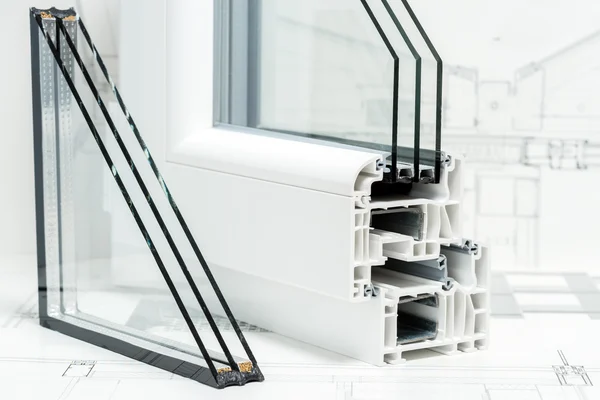European windows have earned a well-deserved reputation for quality, performance, and energy efficiency. One of the key attributes that make European windows stand out is the prevalent use of triple-pane glass filled with argon gas. This combination dramatically enhances thermal performance, sound insulation, and overall energy efficiency.
Understanding Triple Pane Glass
Triple pane windows, as the name suggests, consist of three sheets of glass, or panes, separated by two spacers. The spaces between the panes are often filled with a gas, like argon, to enhance insulation. This is a leap from double-pane windows that consist of two glass sheets with a single layer of gas in between.
Triple pane windows originated in colder European countries like Sweden and Norway, where maintaining indoor warmth is paramount due to harsh winters. They have since spread across Europe and other regions due to their superior energy efficiency.
Here are some reasons why triple pane glass is essential for energy-efficient windows:
Improved Thermal Insulation
Triple pane windows have a high R-value, a measure of thermal resistance. This makes them extremely effective at reducing heat transfer, keeping warm air inside during winter and hot air outside during summer, thereby maintaining a consistent and comfortable indoor temperature.
Reduced Condensation
The extra pane in these windows reduces the chances of condensation forming since the interior pane stays closer to room temperature. This helps to prevent potential moisture damage to window sills and surrounding areas.
Enhanced Sound Insulation
Triple pane windows also provide excellent sound insulation. The extra pane and the wider gap help to reduce noise transmission, making them an ideal choice for homes in busy or noisy areas.
The Role of Argon Gas
Argon gas is an essential component of energy-efficient triple pane windows. It’s an inert, colorless, and odorless gas that is denser than air. This density provides excellent thermal insulation when used in the cavity between the panes of a window.
Here’s why argon gas is so beneficial in triple pane windows:
Enhanced Energy Efficiency
Argon gas reduces the U-value (thermal transmittance) of windows. This means less heat is transferred through the window, keeping homes warmer in winter and cooler in summer.
Reduced Noise Transmission
Argon gas also contributes to noise reduction. Because argon is denser than air, it muffles sound waves more effectively, thereby enhancing the soundproofing characteristics of the window.
Cost-Effectiveness
Although argon gas does add to the cost of the window, it’s relatively inexpensive and is a cost-effective way to enhance window performance. The energy savings from reduced heating and cooling costs can also help offset the initial cost over time.
European Triple Pane Windows with Argon Gas: The Ideal Choice
European window manufacturers have embraced the combination of triple-pane glass and argon gas due to its superior performance. These windows are not only effective at maintaining a comfortable indoor climate but also contribute significantly to energy savings. They also meet stringent energy efficiency standards, such as those required for Passive House certification.
Furthermore, the superior sound insulation offered by triple-pane, argon-filled windows adds to the quality of life by reducing noise pollution from outside. And the reduced condensation helps prevent potential damage to the window and surrounding structure, saving homeowners future repair costs.
In conclusion, the combination of European triple-pane glass and argon gas represents a significant advancement in window technology. As energy efficiency and comfort become ever more important considerations in home and building design, it’s clear that this winning combination will continue to grow in popularity.
